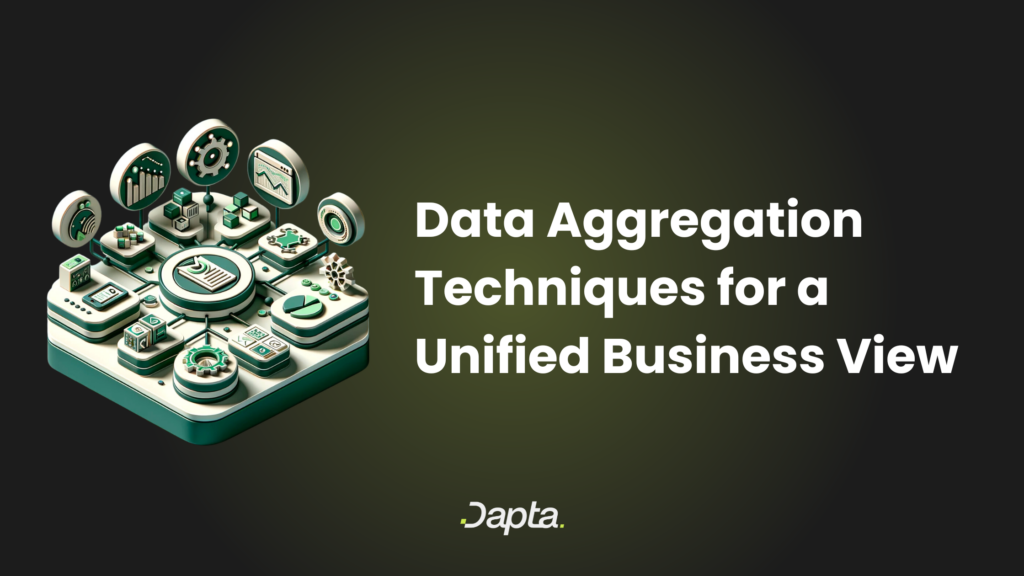Data Aggregation Techniques for a Unified Business View

Understanding the landscape of your business in today’s data-driven world is akin to navigating a complex network of information highways. Each road is paved with data points that, when aggregated, can illuminate the path to informed decision-making and strategic growth. Mastering data aggregation techniques is not just a technical endeavor; it’s a strategic one that can provide a comprehensive, unified view of your business operations. In this extensive guide, we will delve into the intricacies of data aggregation, exploring how it can be leveraged to harness the full potential of your business data.
From the outset, it’s crucial to recognize the value of data aggregation in making sense of the vast amount of information generated by modern businesses. Whether it’s customer interactions, financial transactions, or operational metrics, data aggregation serves as the cornerstone for transforming raw data into actionable insights. By employing sophisticated techniques and tools, businesses can streamline their data processes, reduce noise, and focus on the metrics that truly matter.
Understanding Data Aggregation
Data aggregation is the process of collecting and summarizing data from multiple sources to provide a more comprehensive dataset. It’s a fundamental step in data analysis, allowing businesses to view patterns and trends that would be invisible in the granular details of individual data points. Aggregation can occur at various levels, from simple summation to complex statistical modeling, depending on the business question at hand.
One common example of data aggregation in everyday business scenarios is the consolidation of customer feedback from various channels. By aggregating this data, a company can get a clearer picture of overall customer satisfaction, rather than viewing disparate comments in isolation. This holistic view enables businesses to make more informed decisions about product improvements, customer service strategies, and market positioning.
Techniques for Effective Data Aggregation
There are numerous techniques for aggregating data, each with its own set of advantages. Batch processing, for instance, is ideal for handling large volumes of data at once, while stream processing allows for real-time data analysis. Other techniques include:
- Data warehousing: Storing large amounts of data from various sources in a single, accessible repository.
- Data mining: Using algorithms to discover patterns and relationships within large datasets.
- Data blending: Combining data from different sources to create a more diverse dataset.
When selecting a technique, it’s essential to consider the nature of your data, the speed at which you need insights, and the specific questions you’re looking to answer. For example, if you’re looking to understand real-time user behavior on your website, stream processing might be the most effective approach.
Integrating Data Aggregation into Current Workflows
Integrating data aggregation techniques into existing business workflows can be a game-changer. Tools like APIs and automation platforms enable seamless data transfers between systems, ensuring that data is consistently up-to-date and accurate. For instance, a SaaS company might use API integrations to pull data from its CRM, marketing automation platform, and customer support software into a central data warehouse. This aggregated view can then be used to drive AI-powered insights, leading to more targeted marketing campaigns and improved customer experiences.
Moreover, platforms like Notion can be utilized to organize and visualize aggregated data, making it more accessible to stakeholders across the organization. This democratization of data empowers teams to make data-driven decisions without relying on specialized data analysts.
Benefits of Data Aggregation for Businesses
The benefits of data aggregation are manifold. By providing a unified view of business data, companies can:
- Improve decision-making by basing choices on comprehensive data insights.
- Identify trends and patterns that can inform strategic planning.
- Enhance operational efficiency by pinpointing areas for improvement.
- Personalize customer experiences by understanding client behavior at a macro level.
Furthermore, data aggregation can lead to significant cost savings by eliminating redundancies and optimizing resource allocation. For example, by aggregating sales data across regions, a business can identify underperforming areas and adjust its sales strategy accordingly, rather than investing uniformly across all regions.
Case Studies: Data Aggregation in Action
To illustrate the power of data aggregation, let’s consider a case study. A retail company implemented data aggregation techniques to combine sales data from its online and brick-and-mortar stores. By doing so, it was able to recognize that while in-store sales were declining, online sales were surging. This insight allowed the company to reallocate resources to bolster its e-commerce platform, leading to increased overall sales and a stronger market position.
Another example is a healthcare provider that aggregated patient data from various sources to improve patient care. By analyzing this data, the provider was able to identify patterns in patient readmissions and develop targeted interventions to reduce them, ultimately improving patient outcomes and reducing costs.
Conclusion: Harnessing Data for a Competitive Edge
In conclusion, data aggregation is a vital technique for businesses looking to gain a comprehensive understanding of their operations and make smarter decisions. By effectively collecting and summarizing data from multiple sources, companies can uncover valuable insights that drive growth and innovation. As we move forward in an increasingly data-centric world, the ability to aggregate and analyze data will become a key differentiator for successful businesses.
Whether you’re just starting to explore the possibilities of data aggregation or looking to enhance your current techniques, remember that the journey is one of continuous improvement. With the right tools, strategies, and mindset, you can transform your business’s data into a strategic asset that propels you ahead of the competition.
